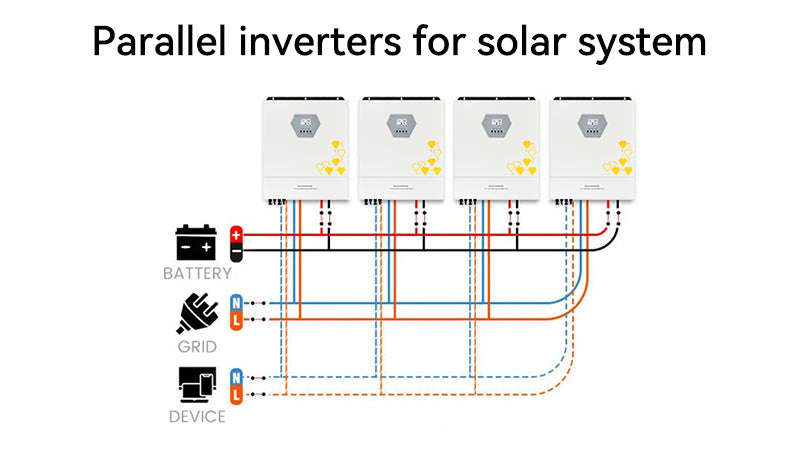
1. Unlock New Possibilities with Expanded Product Capacity and Scalability.
Parallel solar inverters allow users to combine the output of multiple inverters to increase the overall system capacity. This is particularly useful in larger installations where the power demand exceeds the capacity of a single inverter. It also allows for scalability, as additional inverters can be added as power needs grow over time.
2. Embrace Redundancy for Unwavering Reliability and Dependability.
Using multiple inverters in parallel can enhance the reliability of the power supply. If one inverter fails, the others can continue to operate, ensuring that the system still produces electricity. This redundancy is crucial in critical applications where continuous power supply is necessary.3. Enhance Your Home with Versatile Installation and Design Solutions.
Parallel inverters provide more flexibility in the design and layout of solar power systems. They can be used in various configurations and are not limited by the capacity of a single inverter. This makes them ideal for complex or irregularly shaped installations.
4. Enhance Productivity with Cutting-Edge Tools for Increased Efficiency.
Parallel operation can optimize the efficiency of each inverter. Since each inverter can operate at its optimal point, the overall system efficiency can be improved, particularly in varying sunlight conditions where different parts of an installation may receive different amounts of sunlight.5. Optimize Performance with Cutting-Edge Load Balancing Solutions.
Parallel inverters can share the load more evenly, which can reduce the stress on any single inverter and extend the lifespan of the system. This is especially beneficial in systems with variable power loads.Overall, parallel solar inverters are chosen for their ability to meet higher power demands, provide system redundancy, offer installation flexibility, and improve efficiency, making them suitable for both residential and commercial solar applications.

I have bought it 11 K …connection to computer 232 program!!! installWatchPower?
computer connection RS232 program?
I want to learn more about the products. System application and design used
Can I use lifepo4 battery with the 2500 w inverter charger. It says in note to only use lead acid types
Ciao vorrei sapere il modo di pagamento…..
È possibile alla consegna???!!!